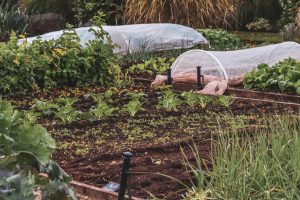
Pumpkin Growth Hack: Fertigation Tips for Halloween Patch Success
October is the season of pumpkins. From farmers preparing their harvest for markets, to landscapers designing festive displays, to families visiting pumpkin patches for Halloween

Fertilizers play a critical role in modern agriculture, landscaping, and home gardening. Yet even with widespread use, many people have questions about how fertilizers work, which ones to choose, and when to apply them. Misunderstanding these basics can lead to wasted money, poor plant performance, or long-term soil issues. To help, we’ve gathered the most common fertilizer questions from readers and customers and answered them from a professional perspective. Whether you’re a homeowner tending a backyard lawn or a farm manager planning seasonal inputs, these insights will help you make smarter decisions and achieve better results.
Fertilizer is any material added to soil or plants to provide essential nutrients that improve growth, yield, or overall health. The three macronutrients—nitrogen (N), phosphorus (P), and potassium (K)—are most critical. Nitrogen drives leafy growth, phosphorus promotes root and flower development, and potassium enhances stress tolerance and overall vigor. Beyond these, plants also rely on secondary nutrients like calcium, magnesium, and sulfur, as well as micronutrients such as iron, manganese, zinc, and boron.
Healthy soils naturally contain some nutrients, but continuous cropping, lawn maintenance, and weathering gradually deplete reserves. Fertilizers replenish these nutrients, ensuring plants don’t suffer deficiencies that could limit growth or reduce yields. For example, the 10-10-10 Complete Lawn and Garden Fertilizer with Micronutrients provides a balanced supply of primary nutrients along with trace minerals often missing from soil.
The right fertilizer depends on your goals, soil condition, and the type of plants you’re growing. A soil test is the best starting point. It identifies nutrient levels and pH, helping you understand which fertilizers will deliver the greatest benefit. For general lawn and garden use, balanced fertilizers like 10-10-10 with Micronutrients are effective. For crops prone to calcium deficiencies, such as tomatoes and peppers, Calcium Nitrate 15.5-0-0 is a targeted choice. If potassium is low, as is often the case in sandy soils, Muriate of Potash 0-0-60 strengthens roots and improves drought resistance. For heavier feeders or commercial crops, 16-16-16 All-Purpose Granular Fertilizer provides higher concentrations of NPK.
Timing varies depending on the crop or landscape. For lawns, early spring and fall are critical periods when grasses are actively growing and able to use nutrients efficiently. For vegetable gardens, applying fertilizer before planting and again during growth ensures plants receive steady nutrition. Commercial growers often split applications across several stages to avoid nutrient losses and to align with crop demand. Using Calcium Nitrate during fruiting, for example, reduces blossom-end rot and supports healthy yields. The key is to match fertilizer timing with growth stages when plants have the highest nutrient needs.
Both granular and liquid fertilizers have advantages. Granular fertilizers, such as 16-16-16 All-Purpose, are easy to store, cost-effective, and provide a slow, steady release of nutrients. They are excellent for lawns, gardens, and field crops where consistent feeding is desired. Liquid fertilizers, on the other hand, deliver nutrients quickly through foliar sprays or drip irrigation, making them valuable for correcting deficiencies fast. Many professional growers use a combination of both, relying on granular fertilizers for base nutrition and liquids for supplemental feeding.
Over-fertilization is one of the most common mistakes. Applying too much can damage plants, pollute waterways, and waste money. The right amount depends on soil test results, crop type, and fertilizer formulation. Always follow label recommendations and adjust based on local conditions. For example, lawns typically need one pound of nitrogen per 1,000 square feet per growing season, while heavy-feeding crops like corn may require more. Products from Supply Solutions LLC include detailed application instructions to guide users in applying the correct rate safely.
When used responsibly, fertilizers are safe and beneficial. Problems arise when they are applied in excess, at the wrong time, or in ways that allow nutrients to leach or run off into waterways. Nitrogen and phosphorus runoff can contribute to algae blooms and water quality issues. That’s why timing, rate, and placement are critical. Using slow-release products, incorporating fertilizer into soil, and avoiding applications before heavy rain are simple practices that protect the environment while maximizing efficiency.
Macronutrients may get the spotlight, but micronutrients are just as vital for plant health. Zinc supports hormone production, manganese is involved in photosynthesis, and boron aids in flower and fruit formation. Deficiencies often show up as stunted growth, poor yields, or distorted leaves. Products like 10-10-10 Fertilizer with Micronutrients ensure that these small but critical nutrients are part of every feeding program, reducing the risk of hidden deficiencies.
Organic fertilizers, such as fish meal or compost, release nutrients slowly and improve long-term soil health by building organic matter and supporting microbial activity. Synthetic fertilizers, like Calcium Nitrate 15.5-0-0 or Muriate of Potash 0-0-60, provide nutrients in precise, readily available forms. Many growers use a combination: synthetics for immediate crop needs and organics for soil building. The choice depends on goals, budget, and production scale.
Scale and precision are the biggest differences. Farms use fertilizers strategically across large acreages, often guided by GPS technology and soil mapping. They may rely on bulk deliveries of 16-16-16 Fertilizer or custom blends tailored to crop requirements. Homeowners and landscapers, on the other hand, typically buy bagged fertilizers and apply them manually or with simple spreaders. Both groups benefit from quality fertilizers, but farms prioritize efficiency and cost per acre, while homeowners focus on visible results in smaller spaces.
Improper storage can reduce fertilizer effectiveness or create safety hazards. Fertilizers should be stored in a cool, dry place away from direct sunlight and moisture. Keep bags sealed tightly and elevated off the ground to prevent clumping. For businesses, proper inventory management ensures that products like Muriate of Potash or Calcium Nitrate are rotated and used before expiration dates. Homeowners should also store fertilizers securely to keep them away from pets and children.
Yes, but indirectly. Fertilizers don’t supply water, but they strengthen plants so they cope better with stress. Potassium, for example, improves water-use efficiency and drought tolerance. Muriate of Potash 0-0-60 is commonly used in regions prone to dry spells because it enhances root strength and water retention. Similarly, balanced fertilizers with micronutrients reduce plant stress and help crops recover faster after extreme weather.
Several common mistakes reduce effectiveness or cause harm:
Avoiding these mistakes ensures fertilizers deliver maximum benefit while minimizing risks.
Visual symptoms often reveal deficiencies. Yellowing leaves may indicate nitrogen shortage, while purpling suggests phosphorus deficiency. Weak stems and poor fruit development can signal potassium issues. Calcium deficiencies, common in tomatoes, cause blossom-end rot. Micronutrient deficiencies can appear as distorted leaves or chlorosis (yellowing between veins). The most reliable method, however, is combining visual observation with soil or tissue tests, then applying targeted solutions such as Calcium Nitrate or balanced fertilizers like 16-16-16.
Choosing a trusted supplier is just as important as choosing the right product. Supply Solutions LLC offers high-quality fertilizers that deliver reliable results for homeowners, landscapers, and farmers. Their product range covers balanced blends, specialty nutrients, and bulk options, ensuring every customer finds the right solution. With excellent customer service and a focus on agricultural success, Supply Solutions LLC provides the expertise and reliability you need for consistent results.
Fertilizers may seem straightforward, but the questions customers ask highlight just how important proper selection, timing, and application are to success. From understanding the role of micronutrients to choosing between organic and synthetic options, every decision impacts plant health and productivity. Whether you’re greening up a home lawn with 10-10-10 Fertilizer with Micronutrients, preventing blossom-end rot with Calcium Nitrate, or boosting crop yields with Muriate of Potash 0-0-60, knowledge is the key to maximizing value.
For expert guidance and premium products, visit Supply Solutions LLC. To get in touch, reach us through our contact form, message us on Facebook, call 503-451-1622, or email sales@mysolutionssupply.com today. With the right answers and the right products, your plants will thrive season after season.

October is the season of pumpkins. From farmers preparing their harvest for markets, to landscapers designing festive displays, to families visiting pumpkin patches for Halloween

Fall soil care is about more than just replacing what crops, lawns, or gardens have consumed over the growing season. It is about setting the
Give us a call or visit our store, and we’ll help you find the right solution for your business.
© Supply Solutions LLC 2025